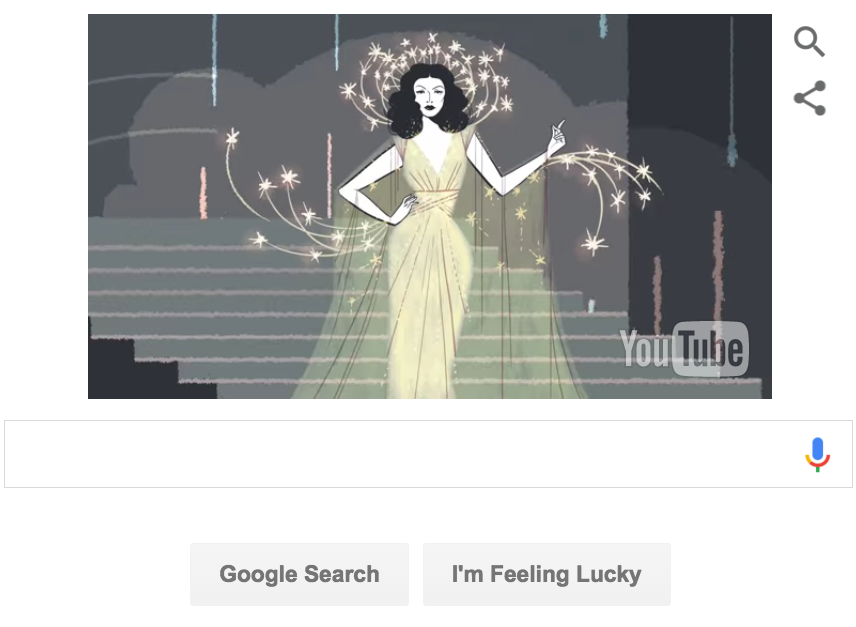Inventor and Actress Hedy Lamarr Honored with Google Doodle

Today's Google Doodle commemorates actress and inventor Hedy Lamarr, on what would have been her 99th birthday.
During World War II, Lamarr designed a system to safeguard homing signals on torpedoes launched by Allied forces, protecting them from Nazi interception by "hopping" between radio frequencies. Her patent, co-created with composer George Antheil, never saw action during the war, but it did pave the way for technological innovations that secure wireless networks today.
Born Hedwig Eva Kiesler in Vienna in 1914, Lamarr launched her acting career while still a teenager. She had appeared in a handful of Czech and German productions when her role in the 1933 erotic movie "Ecstasy" brought Hollywood to her door. After signing with MGM, she starred in a string of films during the studio's "Golden Age." [Creative Genius: The World's Greatest Minds]
Lamarr was popular at the box office, and drew international acclaim as one of cinema's great beauties, but her talents as an inventor went unsung for decades. In 1941, she and Antheil donated the patent for their "Secret Communication System" to the U.S. Navy, though it wasn't put to use until the Cuban Missile Crisis in 1962.
In 1997, Lamarr was honored by the Electronic Frontier Foundation (EFF), an international nonprofit digital-rights group. Together with Antheil, she received the Pioneer Award, which recognizes achievements that contribute to the development of computer-based communications, such as cellphones, GPS, Wi-Fi and Bluetooth. "This tool they developed to defend democracy half a century ago promises to extend democracy in the 21st century," an EFF spokesman said.
Follow us @livescience, Facebook & Google+. Original article on Live Science.
Sign up for the Live Science daily newsletter now
Get the world’s most fascinating discoveries delivered straight to your inbox.

Mindy Weisberger is an editor at Scholastic and a former Live Science channel editor and senior writer. She has reported on general science, covering climate change, paleontology, biology and space. Mindy studied film at Columbia University; prior to Live Science she produced, wrote and directed media for the American Museum of Natural History in New York City. Her videos about dinosaurs, astrophysics, biodiversity and evolution appear in museums and science centers worldwide, earning awards such as the CINE Golden Eagle and the Communicator Award of Excellence. Her writing has also appeared in Scientific American, The Washington Post and How It Works Magazine. Her book "Rise of the Zombie Bugs: The Surprising Science of Parasitic Mind Control" will be published in spring 2025 by Johns Hopkins University Press.











